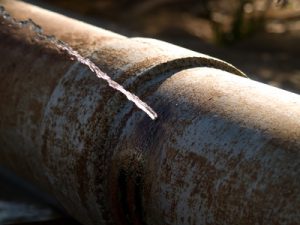 The warm weather in Florida attracts hundreds of thousands of visitors every year. Warm weather is the reason many people retire to Florida. But warm weather can also bring plumbing headaches; yes, plumbing problems. We may love to live and thrive in the warm weather, but bacteria do too.
The warm weather in Florida attracts hundreds of thousands of visitors every year. Warm weather is the reason many people retire to Florida. But warm weather can also bring plumbing headaches; yes, plumbing problems. We may love to live and thrive in the warm weather, but bacteria do too.
What do bacteria have to do with plumbing? As bacteria build up in pipes, it causes a threat to our health. To kill bacteria, chlorine is frequently added to our water supply. This may be a good thing for killing bacteria, but it’s bad for our pipes. The chlorine is normally mixed with hydrogen sulfide. This combination is extremely corrosive to pipes. You can have the best grade of copper pipes around, but when this chemical mixture is flowing through them they will corrode. And pipes with hidden leaks are going to cause a problem much faster.
You may not even know you have a leak. There may be no evidence of water dripping or water damage to walls or ceilings. Maybe you notice that your water bill has risen and your use of water has not increased. This may be an indication of a hidden leak. Even a leak as small as a pinhole can grow over time. The corrosive make-up of the chlorine-hydrogen sulfide mixture will deteriorate the pipe at a more rapid state. Ignoring the signs of a leaky pipe can cause mold to form, especially in the warm weather in Florida. Water damage will also cause structural damage to your home over time.
Repairing a leaking pipe may be an easy fix. You may go to the hardware store and pick up an epoxy putty to apply to the area of the pipe or even an amalgamation tape. This fix is most likely temporary. To ensure a more permanent fix, it’s time to call in the professionals. Plumbers can repair these pesky leaks. If the damage is more extensive than you originally thought, sections of pipe may need to be replaced.
Knowing that there is a risk for leaks caused by the corrosive chemicals added to the water supply, it is always a good idea to do periodic checks of your system. Check pipes for moisture or drips. Look for water stains on ceilings or walls. Make sure your water pressure doesn’t decrease. Watch for a rise in your water bill. If any of these signs are present, it is time to call a plumber.